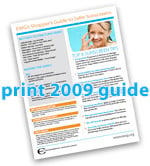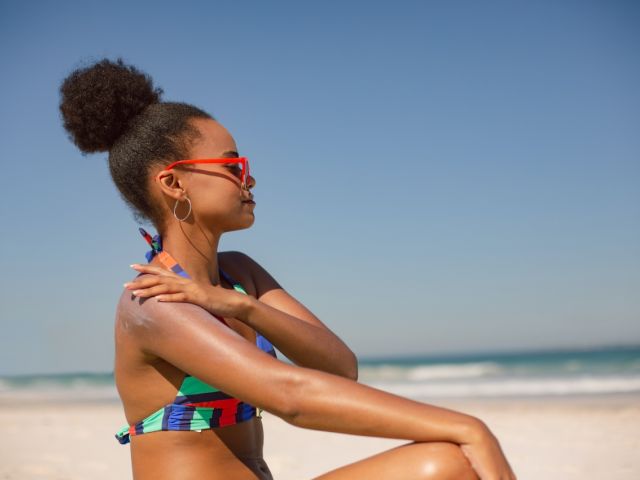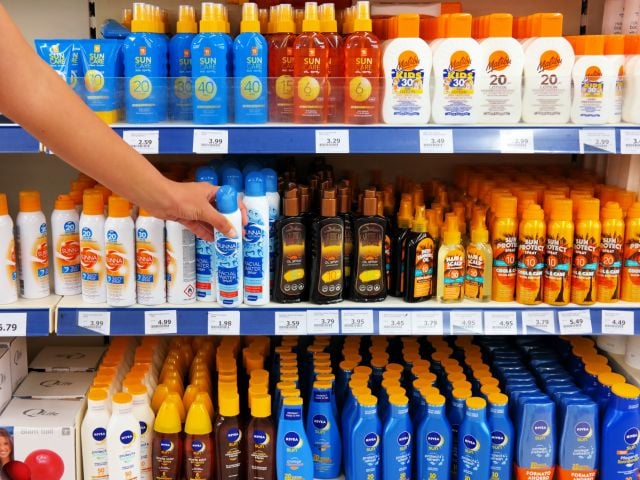Maybe you are, maybe you aren't. There are two simple ways to check:
- Check the label - only four sunscreen filters approved by FDA can provide broad-spectrum UVA protection; avobenzone, Mexoryl, titanium dioxide, and zinc oxide.
- Use the EWG 2009 sunscreen guide to check the UVA score.
The incredibly slow pace of FDA action has yet to aid consumers in determining the UVA protection provided by sunscreens. In our analysis of sunscreens this year we found that 8% of 646 products marketed as "broad spectrum" provided low UVA protection. The FDA has proposed a method for evaluating UVA protection but only 1 company is following these guidelines voluntarily. Why do we even need UVA protection?
Ideally we would be evaluating sunscreen performance against health protection. Sunscreens were originally designed to prevent sunburn and they remain effective in this task. Sunburn is caused primarily by the higher energy UVB radiation. While UVB radiation has been implicated in sunburn we are exposed to a much larger amount of UVA radiation that penetrates deeper into the skin as shown below.
The shift to broad-spectrum protection has been motivated by studies showing that UVA radiation may also play an important role in photodamage--immune suppression, skin aging and potentially skin cancer. With indications that different wavelengths across the UV range lead to different health endpoints it would seem prudent to block UV radiation equally to ensure maximum protection with minimal potential damage from increased relative exposure to regions of the UV spectrum not blocked by a product.
This idea is summed up by sunscreen expert Diffey, "'We do not yet know the importance of UVA with regard to photoaging...and...skin cancer...It would seem prudent, therefore, to encourage the development of sunscreens which absorb more or less uniformly throughout the ultraviolet spectrum'."
Is UVA protection better in different countries?
EWG, the United States (proposal - No action yet), the European Union, the United Kingdom, Australia and Japan have all chosen different methods to evaluate UVA protection. The US, EU and UK are evaluating "balanced protection" by looking at light blocked in the UVA range in relation to the light blocked in the UVB range. ie a higher SPF sunscreen should require higher UVA protection.
Country / region Date Method Scoring Reference United States Proposed 8/27/2007 Ratio of UVA-I (340-400nm)/ average UV absorbance (290-400nm) >0.95 (4 stars) >0.7 (3 stars) >0.4 (2 stars) >0.2 (1 star) FDA monograph 21 CFR parts 347 & 352 United Kingdom Boot Stars Ratio of the mean UVA (320-400nm) absorbance / mean UVB (290-320nm) absorbance Post irradiance >0.86 (5 stars) >0.76 (4 stars) >0.57 (3 stars) European Union Recommendation 9/22/2006 UVA (320-400)/ SPF > 1/3 and critical wavelength >370nm Allowed to be sold Offical Journal of the EU L 265/39 26.9.2006 (2006/647/EC) Australia 1998 <10% mean transmission between 320-360nm Broad spectrum AS/NZS 2604:1998 Japan UVA-PF, persistent pigment darkening in vivo >8 (PF+++) >4 (PF++) >2 (PF+)
The major differences in all of these methods arise from attempting to assign one or two consumer labels comprised of SPF and a UVA protection factor to a complex sunscreen absorbance curve as shown in the example below.
What this boils down to is that every regulatory committee has found a different way to represent the same data. The "FDA agrees with one comment that there is no biological basis for establishing a strict UVA to UVB ratio and that such a ratio would be arbitrary." (FDA 2007) The approved UVA blocking ingredient list differs between jurisdictions and for this reason some of the products that EWG recommends may not score well elsewhere.
Without a direct link to health endpoints EWG evaluates both the amount of UVA light blocked as well as the spectral uniformity index proposed in 2009 by Diffey (the same person who proposed the previous generation of methods and the foundation for the method used in the UK. The spectral uniformity method assesses the flatness of the UV protection between 290-380nm. The spectral uniformity results correlate well with the US, EU and UK methods in an easier to understand format. More detailed information can be found in the methodology section of the EWG sunscreen guide.




